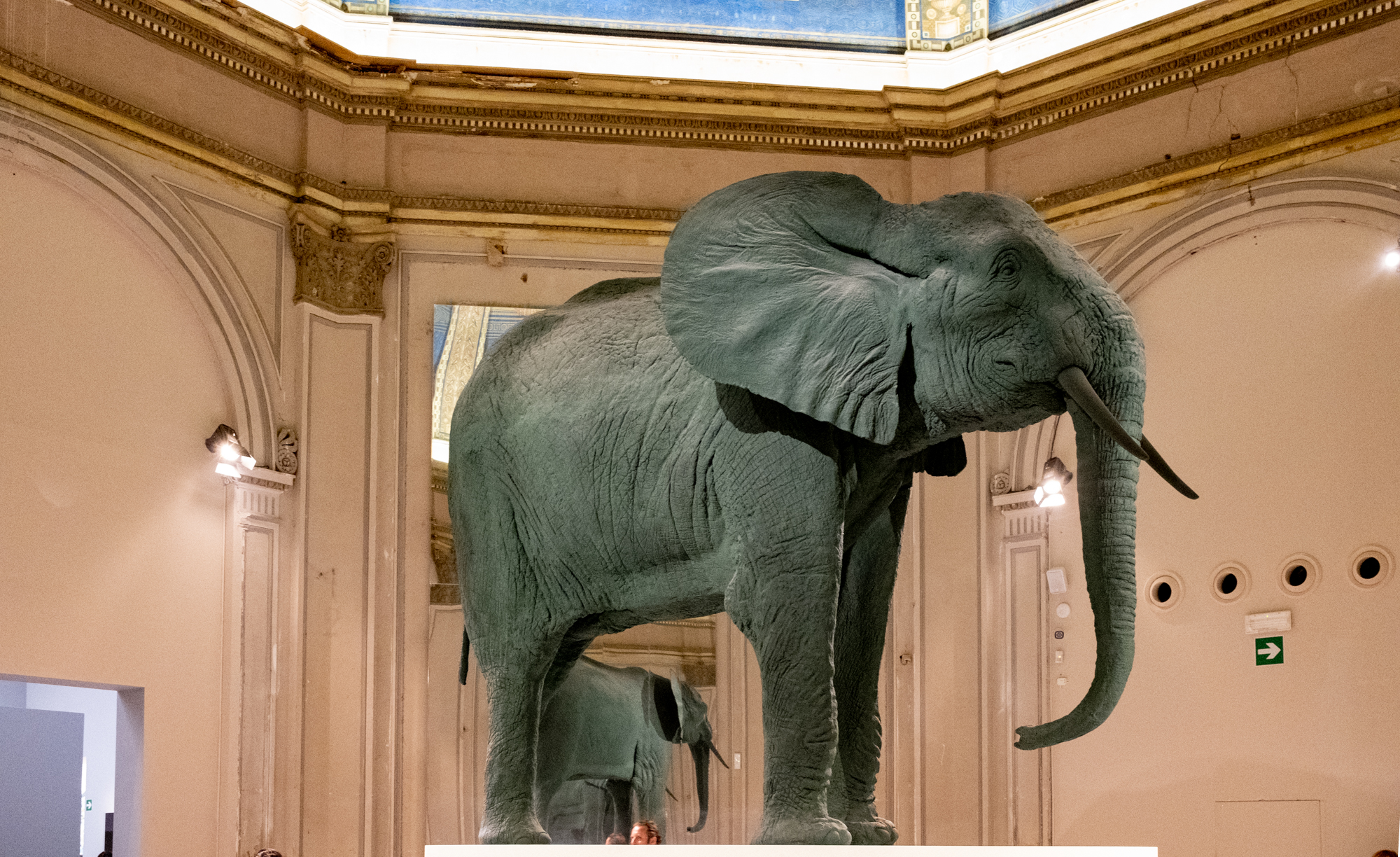The exhibition space at the Giardini consists of a large white box full of big white exhibit spaces, and it's surrounded by an assortment of structures containing permanent country pavilions. The US, the UK, Canada, Spain, and Israel are just a few with permanent pavilions. Architecturally there isn't anything particularly memorable. Russia's pavilion, in one of the few attractive buildings, sat alone and quiet.


















































Guide page 186.The project by Ignasi Aballi (Barcelona, 1958) for the Spanish Pavilion transpires both inside and outside the building. Inside, the starting point is straightforward enough: to shift the building on its axis. Located in a corner of the Giardini, close to the entrance, the building is slightly skewed with respect to its neighbours, Belgium and the Netherlands. Ignasi Aballi stumbled upon this apparent mistake while studying the floorplans. He was struck, on one hand, by the unsettling proximity with Belgium, with the walls of the two pavilions almost touching at one point, and, on the other, by the wedge of wasted space at the back of the pavilion. In the event that the actual location was a defect, what would happen if the pavilion was rotated to align itself with the adjacent buildings? And if he were to do that, what changes would the correction entail?
The result is a replica of the inside of the pavilion within the pavilion itself, turning it ten degrees in order to align it with the neighbouring buildings. The intervention disrupts spatial memory and modifies the exhibition space, its location at the Biennale and its relationship with the city of Venice. A particularly telling intervention just when the Spanish Pavilion is commemorating its centennial. Why correct a pavilion previously validated by someone else? Why compare it with its neighbours? Why this titanic effort only to end up losing space? This is where the apparently simple conceit becomes much more complicated.
Biennale guide


Guide page 186.The project by Ignasi Aballi (Barcelona, 1958) for the Spanish Pavilion transpires both inside and outside the building. Inside, the starting point is straightforward enough: to shift the building on its axis. Located in a corner of the Giardini, close to the entrance, the building is slightly skewed with respect to its neighbours, Belgium and the Netherlands. Ignasi Aballi stumbled upon this apparent mistake while studying the floorplans. He was struck, on one hand, by the unsettling proximity with Belgium, with the walls of the two pavilions almost touching at one point, and, on the other, by the wedge of wasted space at the back of the pavilion. In the event that the actual location was a defect, what would happen if the pavilion was rotated to align itself with the adjacent buildings? And if he were to do that, what changes would the correction entail?
The result is a replica of the inside of the pavilion within the pavilion itself, turning it ten degrees in order to align it with the neighbouring buildings. The intervention disrupts spatial memory and modifies the exhibition space, its location at the Biennale and its relationship with the city of Venice. A particularly telling intervention just when the Spanish Pavilion is commemorating its centennial. Why correct a pavilion previously validated by someone else? Why compare it with its neighbours? Why this titanic effort only to end up losing space? This is where the apparently simple conceit becomes much more complicated.
Biennale guide


Guide page 186.The project by Ignasi Aballi (Barcelona, 1958) for the Spanish Pavilion transpires both inside and outside the building. Inside, the starting point is straightforward enough: to shift the building on its axis. Located in a corner of the Giardini, close to the entrance, the building is slightly skewed with respect to its neighbours, Belgium and the Netherlands. Ignasi Aballi stumbled upon this apparent mistake while studying the floorplans. He was struck, on one hand, by the unsettling proximity with Belgium, with the walls of the two pavilions almost touching at one point, and, on the other, by the wedge of wasted space at the back of the pavilion. In the event that the actual location was a defect, what would happen if the pavilion was rotated to align itself with the adjacent buildings? And if he were to do that, what changes would the correction entail?
The result is a replica of the inside of the pavilion within the pavilion itself, turning it ten degrees in order to align it with the neighbouring buildings. The intervention disrupts spatial memory and modifies the exhibition space, its location at the Biennale and its relationship with the city of Venice. A particularly telling intervention just when the Spanish Pavilion is commemorating its centennial. Why correct a pavilion previously validated by someone else? Why compare it with its neighbours? Why this titanic effort only to end up losing space? This is where the apparently simple conceit becomes much more complicated.
Biennale guide





